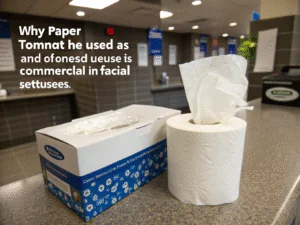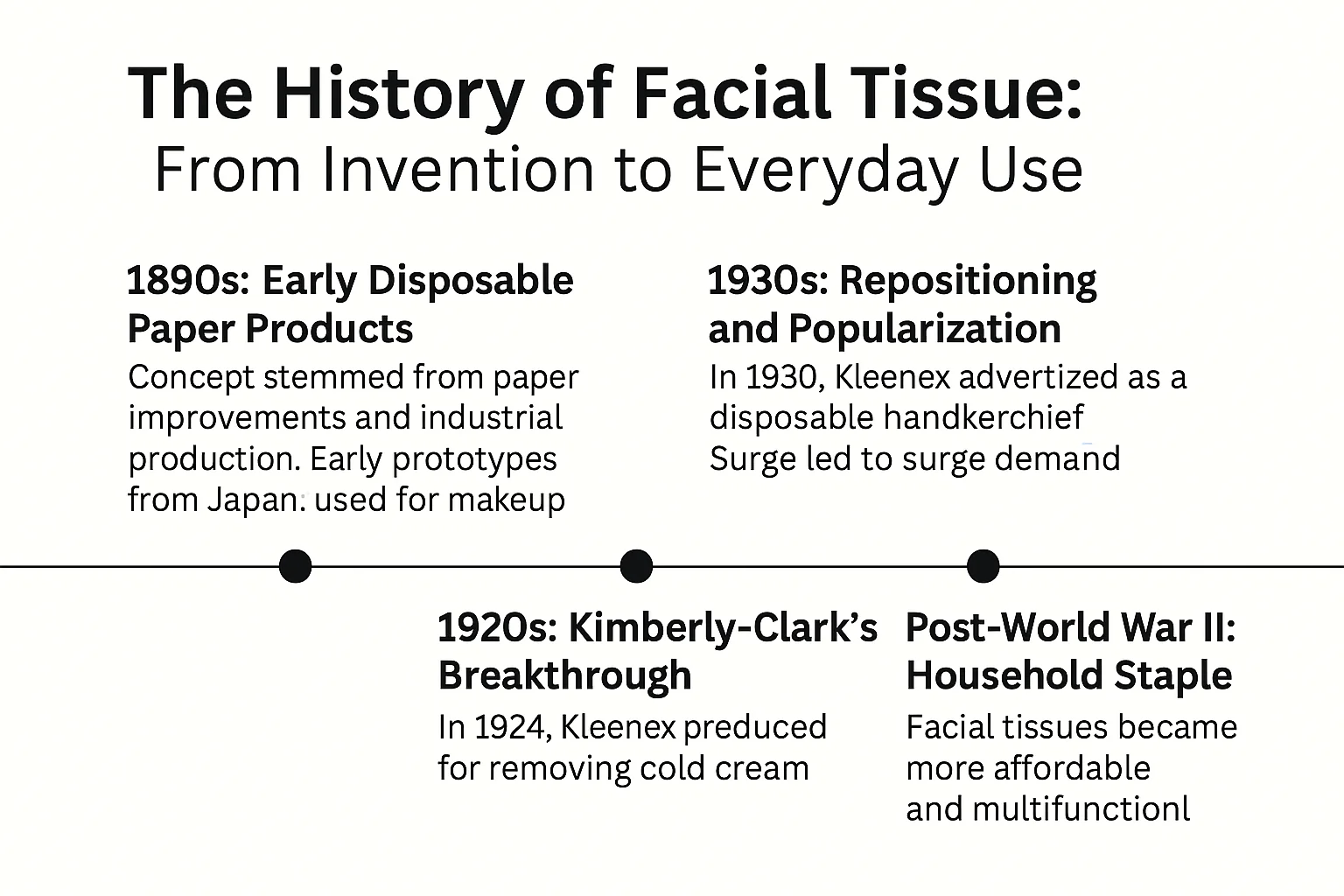The History of Facial Tissue: From Invention to Everyday Use?
Facial tissue feels like a modern convenience, but its story is longer and more surprising than most people think. Let’s trace how it became part of everyday life.
Facial tissue was first introduced by Kimberly-Clark in 1924 as a makeup remover. Marketed under the brand Kleenex, it quickly evolved into a disposable handkerchief, then into a household essential used globally.
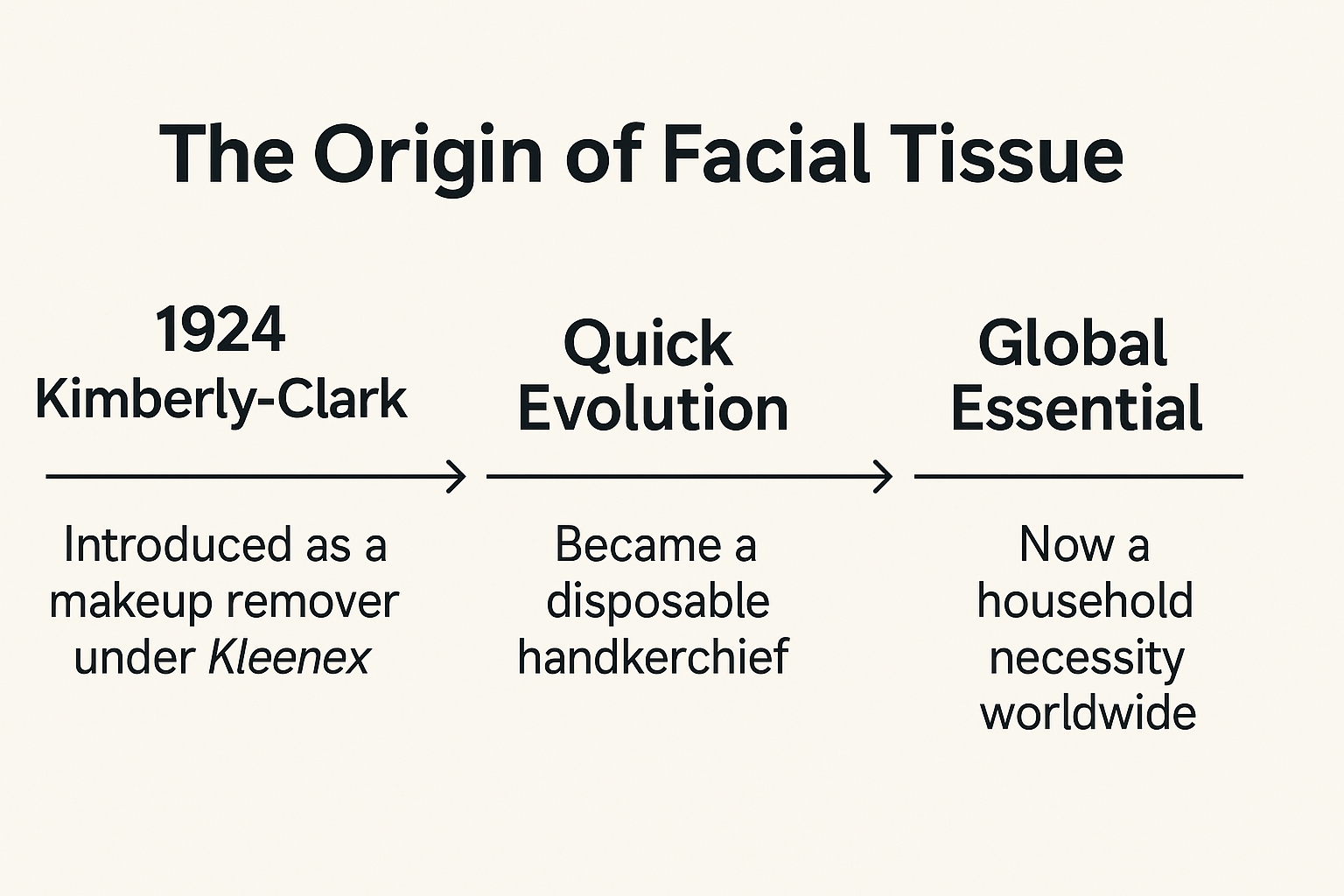
Most people associate tissues with colds or makeup — but few know how global events, innovation, and pop culture shaped the tissue we take for granted today.
What is the history of facial tissue?
Facial tissue has become so ordinary that it’s hard to imagine a time before it existed.
Tissues as we know them began in 1924, when Kimberly-Clark introduced Kleenex. It was first sold as a disposable cloth to remove cold cream and makeup. Before that, people used cloth handkerchiefs. That was normal — until someone had the idea to throw the cloth away instead of washing it.
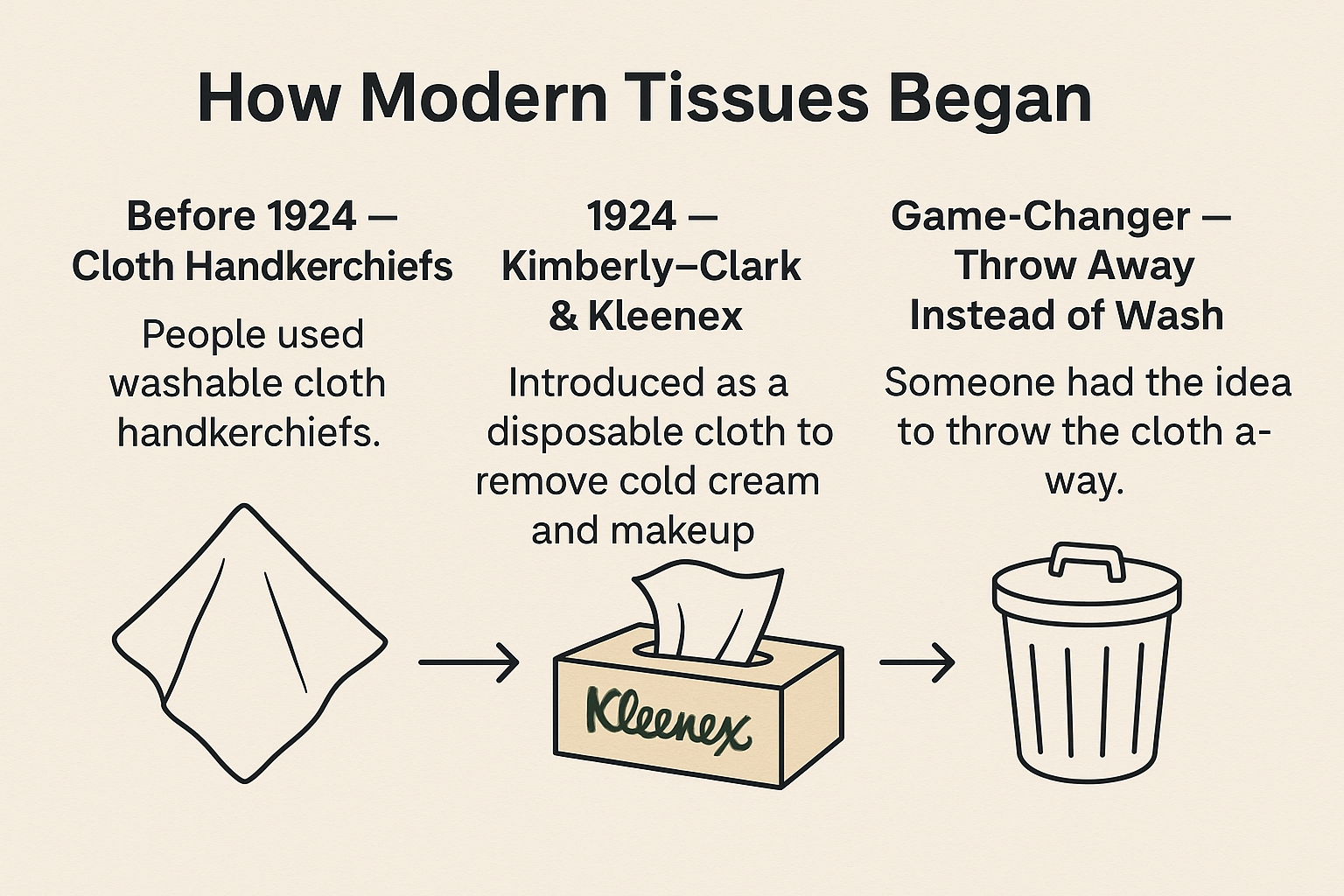
I found it fascinating that Kimberly-Clark didn’t invent facial tissue out of nowhere. During World War I, they had developed a creped cellulose wadding — a soft, absorbent material used as a cotton substitute in surgical bandages. After the war, they looked for a new use for this material. That’s when the idea for Kleenex came up.
The product caught attention fast. It was affordable, hygienic, and easy to use. In the early 1930s, marketing shifted Kleenex from a beauty product to a disposable handkerchief. That shift was based on customer feedback. People were already using it to blow their noses, and the company decided to lean into that.
Since then, facial tissue has grown beyond a single brand. Other companies followed. The product spread globally, helped by improvements in pulp technology and paper manufacturing. What started as a soft war-time fabric became a daily necessity.
What was Kleenex originally intended for?
Most people think of Kleenex as a tissue brand — but that wasn’t always the plan.
Kleenex was originally introduced as a product to remove cold cream. In the 1920s, makeup removal was messy. People used cloth towels or rags. Kimberly-Clark marketed Kleenex as a cleaner, more hygienic option for women to wipe off cosmetics. Early ads even showed famous actresses gently dabbing their faces with Kleenex sheets.
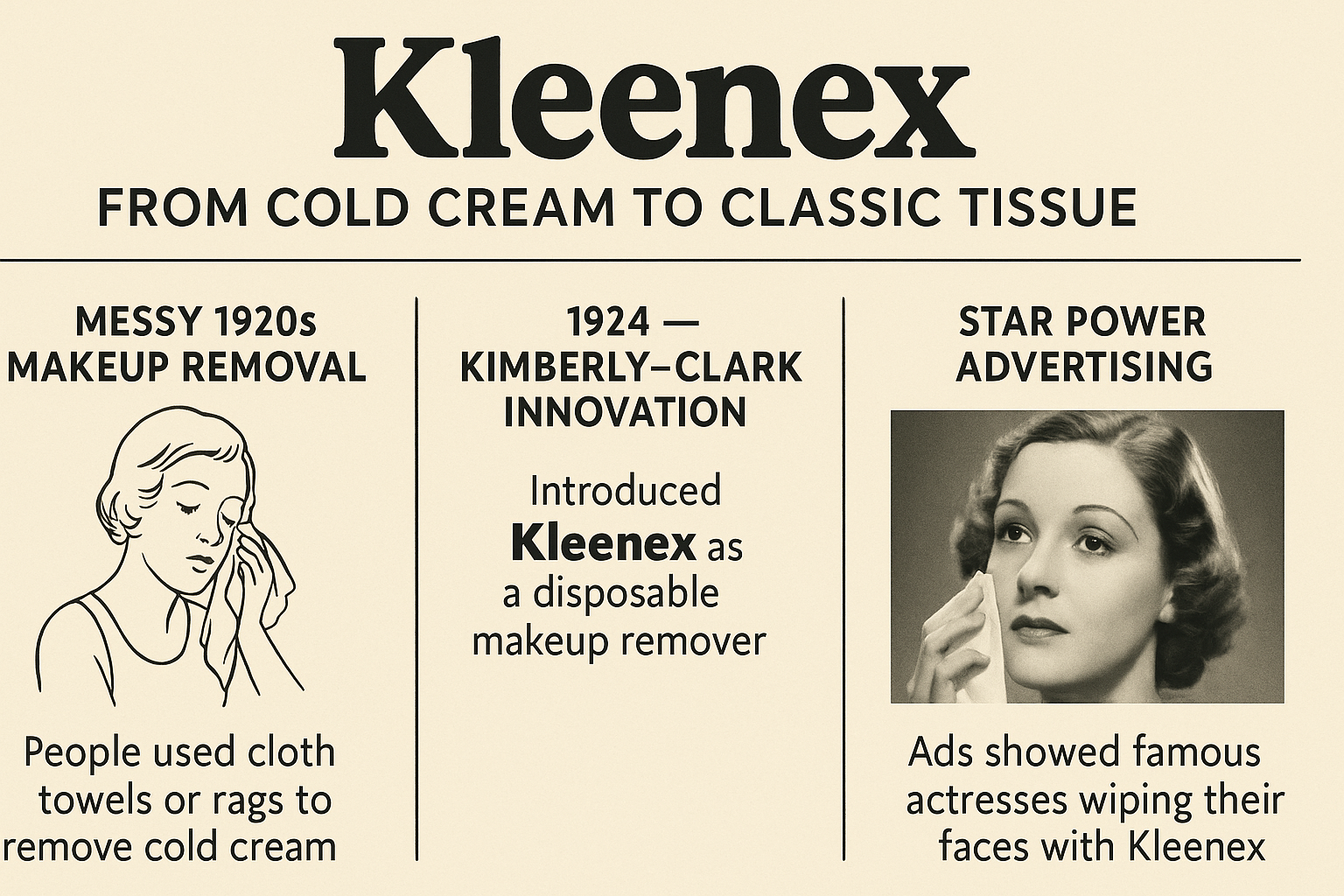
When I read early Kleenex ads in a library archive, I was struck by how focused they were on glamour. The tissues were linked to movie stars, soft lighting, and beauty routines. It was all about elegance and ease. However, the product was much more versatile than that.
Customers quickly discovered new uses. Many used it as a disposable alternative to cloth handkerchiefs. Kimberly-Clark noticed this and ran a customer survey in the 1930s. The results changed everything. A majority of buyers admitted they used Kleenex to blow their noses. This led to a rebranding: Kleenex wasn’t just a beauty wipe. It became a disposable tissue for everyday use.
That moment marked the shift. Kleenex was no longer a luxury item. It became a hygiene product — practical, affordable, and needed. The rest of the industry followed. Other brands entered the market, and tissues became a standard item in homes, schools, and offices.
Where do facial tissues come from?
Facial tissues are made from a surprisingly complex process involving natural materials and precise manufacturing steps.
The main raw material used in tissue production is cellulose fiber. This usually comes from wood pulp, recycled paper, or sometimes cotton. I once visited a pulp mill during a research trip. The smell was strong, but the science behind it was fascinating. Logs are broken down, bleached, and processed into soft fibers.
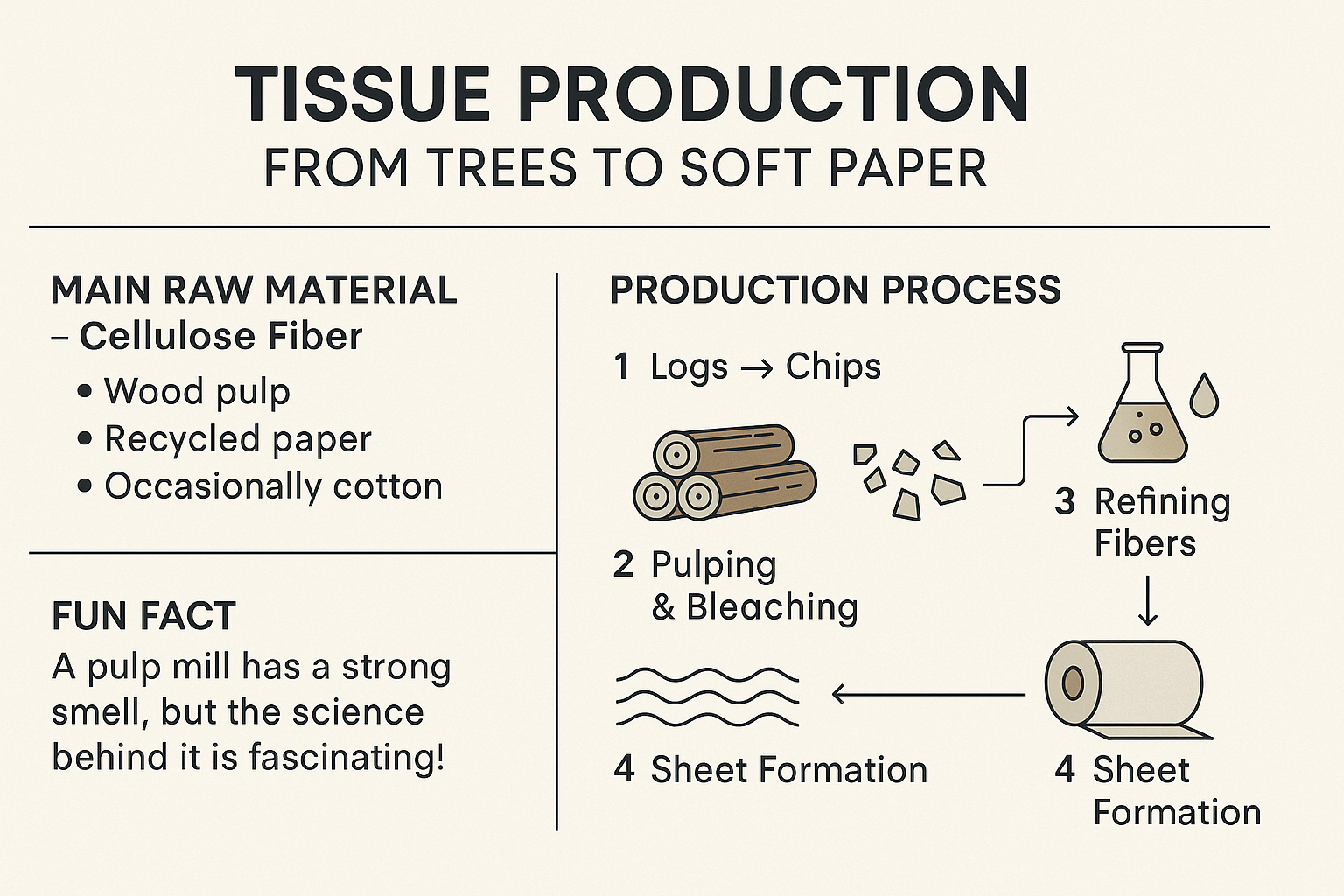
After pulping, the fibers are spread into thin sheets. These are pressed and dried to remove water. What makes facial tissue unique is how it’s treated after that. Manufacturers add softeners, lotions, and sometimes fragrances to give the tissue a smooth, gentle texture. Some are calendered — meaning the sheets are passed through rollers to make them even thinner and more delicate.
Most facial tissues are two-ply or three-ply. Each layer is bonded to another to balance softness and strength. A lotion-infused layer might be added between them. Then the sheets are cut, folded, and packed into boxes. It’s all automated, and the scale is massive — some factories produce millions of boxes a year.
In short, tissues come from trees, but they’re transformed by technology. Over time, the process has improved to reduce waste, lower costs, and make the paper biodegradable. Today, some brands use bamboo or recycled materials to meet environmental goals. The tissue may be soft, but the science behind it is anything but simple.
Who invented the tissue box and why?
The tissue box might seem like just a package — but it changed how people used tissues.
The pop-up tissue box was designed to be both functional and clean. Early on, tissues came in flat packs or wrapped bundles. That worked, but it wasn’t ideal. People didn’t want to touch every sheet just to grab one. So engineers came up with the pop-up design: a folded stack where each sheet pulls the next one into place.
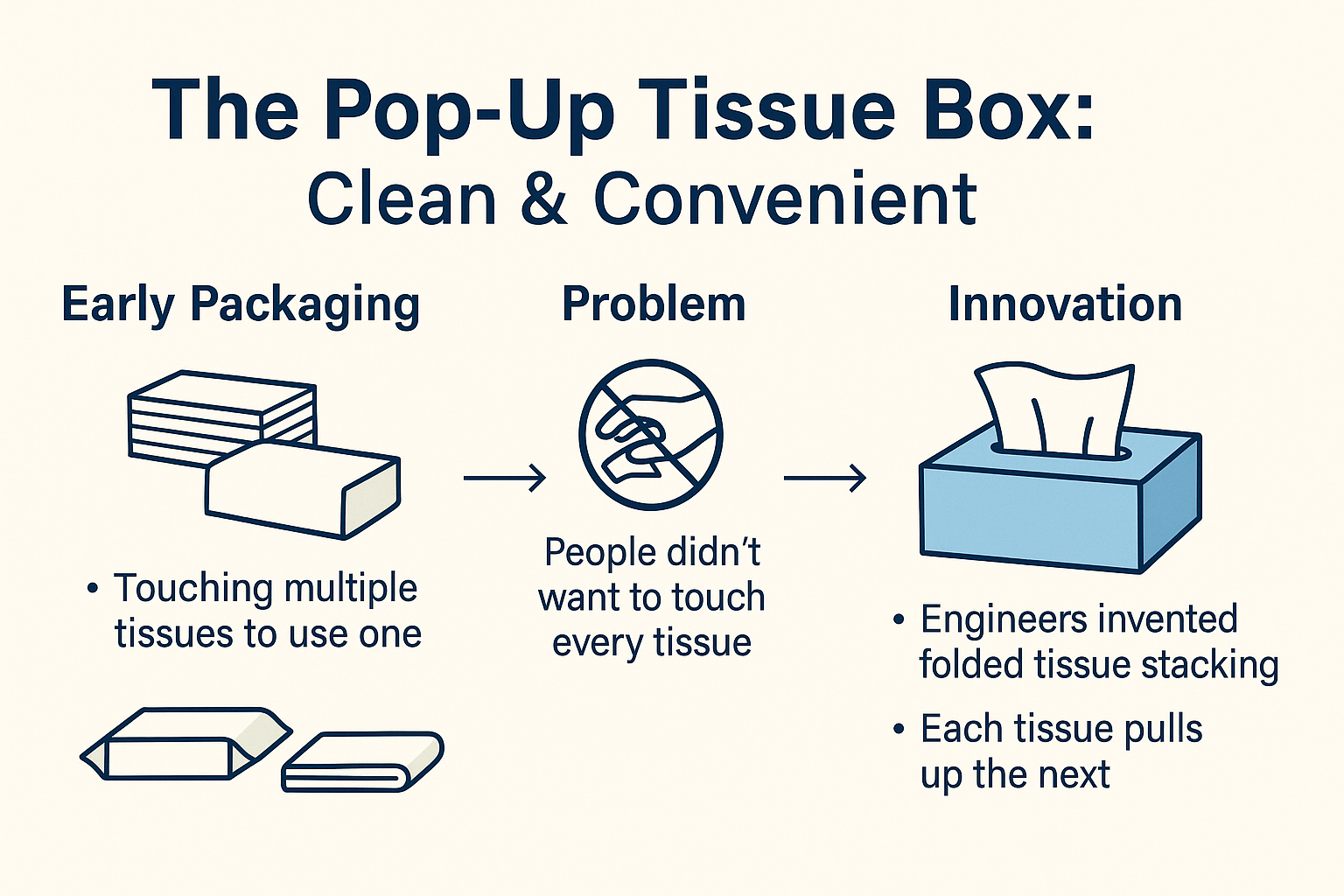
I once read in a design journal that Kimberly-Clark patented their first pop-up tissue box system in the 1920s. It sounds small, but it solved a real problem: how to make disposable paper easy to store, access, and use without contamination. The top-opening box meant you could grab a tissue with one hand. That was new at the time.
Later innovations added perforated openings, plastic film protectors, and travel-sized packaging. These changes made tissues more portable and more suitable for cars, purses, desks, and classrooms.
The tissue box helped facial tissue move beyond the bathroom. It turned tissues into a part of daily life — always within arm’s reach. Without the box, tissues might still be a luxury item. With it, they became a convenience product we use without even thinking.
How did facial tissues become a global product?
Facial tissue didn’t stay an American product for long. Within decades, it became a worldwide essential.
After its success in the U.S., companies began exporting tissues or licensing their technology. By the 1950s, facial tissue was available in Canada, the U.K., and parts of Europe. Local paper companies in Asia and Latin America soon created their own brands. In Japan, for example, facial tissue aligned with long-standing cultural preferences for cleanliness and politeness.
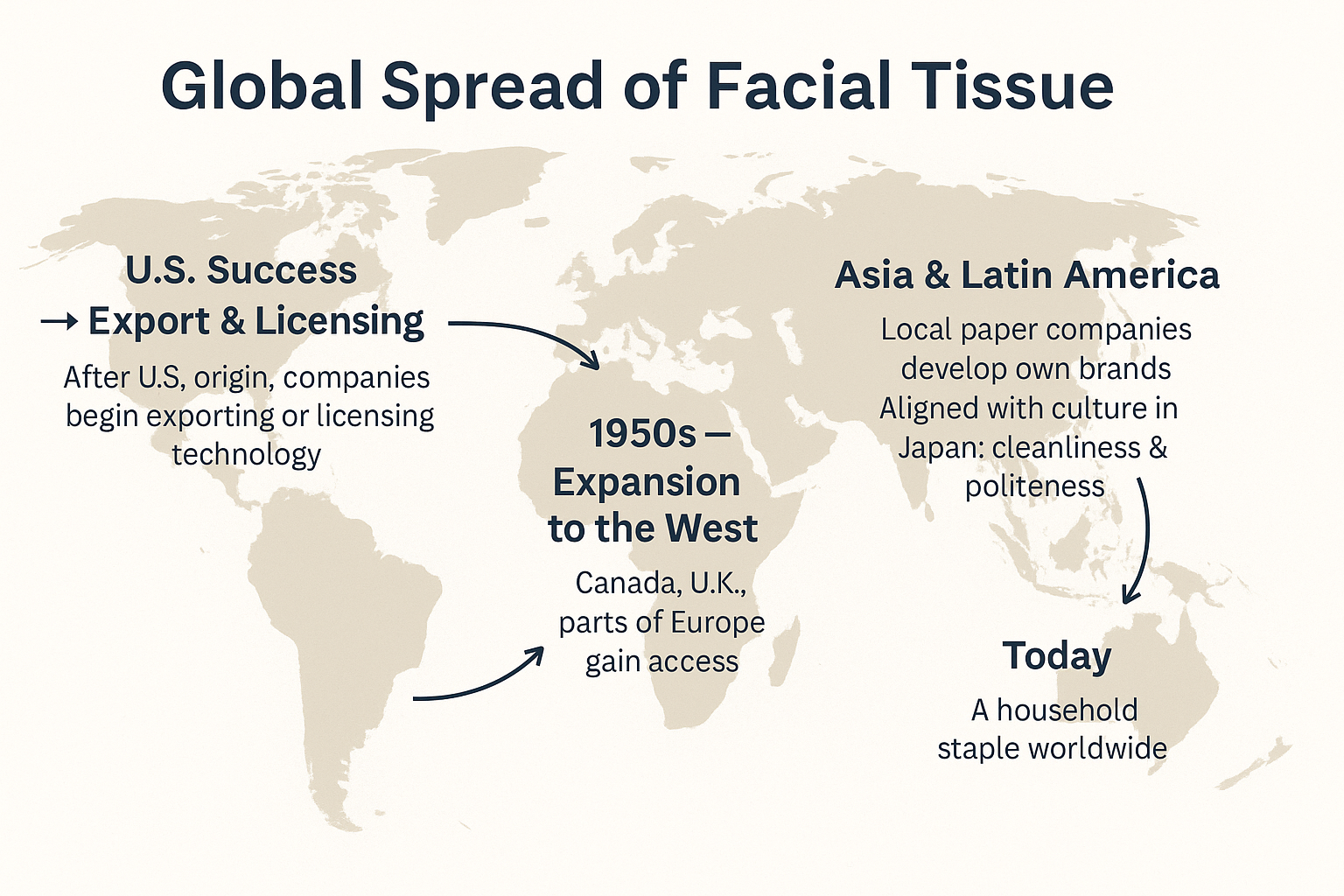
I remember visiting Taiwan and seeing compact tissue packs handed out as street advertisements. That model — using branded tissue packs for marketing — turned tissues into a portable, visible item. In places like China, the rise of facial tissue came alongside urbanization and rising hygiene standards. Tissue culture grew with economic growth.
Global brands like Kleenex, Tempo, and Scott expanded aggressively. At the same time, domestic competitors like Vinda (China), Nepia (Japan), and Paseo (Indonesia) built strong regional markets. The rise of private-label and eco-friendly tissue options also shaped global demand.
Now, facial tissue is sold in supermarkets, vending machines, airports, and clinics in nearly every country. It’s used for hygiene, makeup, parenting, and even rituals. What began as a product for a small market has turned into a symbol of modern living — clean, disposable, and always ready.
Conclusion
Facial tissue started as a beauty wipe in 1924. Today, it's a global daily essential made from advanced paper tech and smart packaging. Its story shows how small ideas grow big.
Share this article
About the Author

You might also like
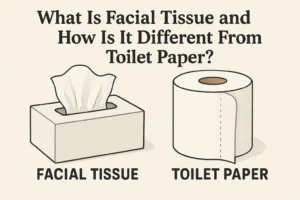
What Is Facial Tissue and How Is It Different From Toilet Paper?
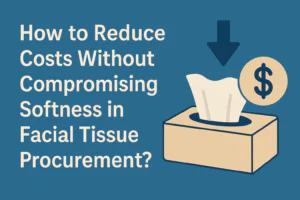
How to Reduce Costs Without Compromising Softness in Facial Tissue Procurement?

Is Bamboo Pulp a Better Option for Soft Facial Tissue Buyers?
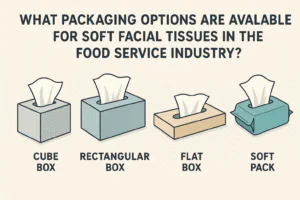
What Packaging Options Are Available for Soft Facial Tissues in the Food Service Industry?

Why Is Softness the Top Priority in Facial Tissue Selection?
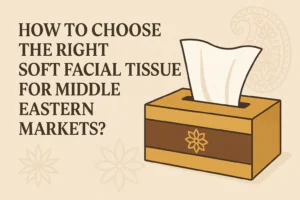
How to Choose the Right Soft Facial Tissue for Middle Eastern Markets?

What Are the Key Features of High-Quality Soft Facial Tissues for Retail Chains?
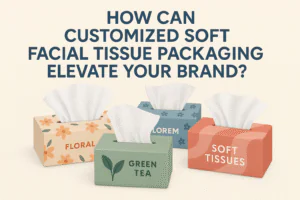
How Can Customized Soft Facial Tissue Packaging Elevate Your Brand?

Why Do Wholesalers Prefer Soft Facial Tissues Made from Virgin Pulp?
